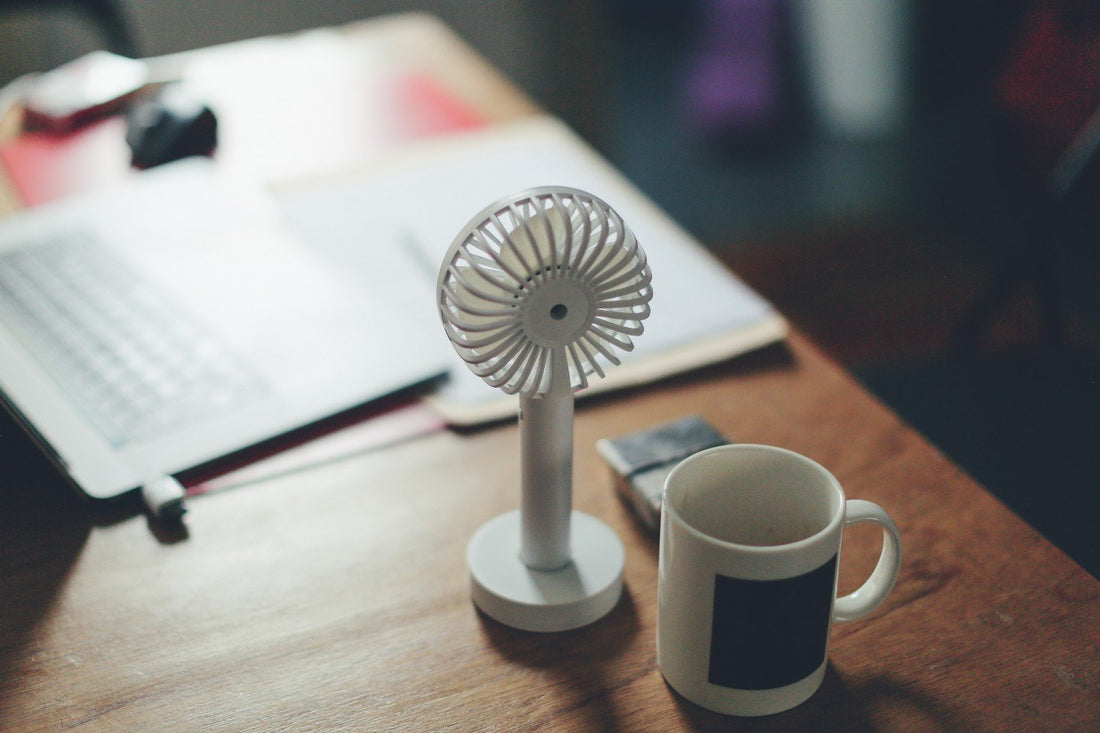GP Dr Shilpa McQuillan discusses hot flushes – what are they, why do they happen, and how can you reduce the impact they’re having on your life. From lifestyle changes to Hormone Replacement Therapy (HRT), there’s a lot you can do to get keep cool and in control.
What are hot flushes?
Hot flushes are often described as an intense feeling of warmth that ‘spreads through’ the body and face, even in times and places others may not describe as warm. Often, they can be associated with excess sweating and palpitations.
They can affect you in many ways. Some women get occasional hot flushes that do not impact on their quality of life too much. However, others may experience frequent flushes or find them more uncomfortable and embarrassing, resulting in disruption to their normal routine, work, and sleep.
Why do hot flushes happen?
Hot flushes are thought to be caused by the change in hormones (mainly low levels of oestrogen) that affect your body temperature control. They can occur early in the lead up to menopause – what’s called perimenopause, the time when you are still having periods – and after the menopause for many years.
Are hot flushes anything to worry about?
Hot flushes are usually harmless. However, if you are experiencing other symptoms such as weight loss, diarrhoea, muscle weakness, or feel generally unwell then you should talk to your GP to make sure menopause is the cause of these symptoms
How can you help manage hot flushes?
How you manage your hot flushes depends on how badly they are affecting you. Some women find them ‘mild’ and cope without any treatment – but if you are finding them challenging, there’s a lot you can do.
Lifestyle factors – the simplest first step
There are many lifestyle factors that trigger hot flushes and by modifying these, you can really help ease your symptoms.
It can be hard to balance healthy living and the demands of busy modern lives, but investing some time and energy now in looking after your body can be really beneficial. Do what you can and see how you get on – but every small change helps a great deal, so see what you can manage.
You can try exercises like yoga for hot flushes to see if this helps.
Try to limit alcohol
It is important to limit alcohol intake because drinking alcohol can change the body temperature in many ways. Firstly, our liver breaks down alcohol. This digestion process results in heat production and can lead to a ‘warm feeling’. Alcohol also causes our blood vessels to dilate, resulting in the ‘facial flushing or blushing’ that some people experience. Excess alcohol also causes sweating – because the body trying to rid itself of toxins. As you can imagine, none of this helps when your hormones are triggering hot flushes too.
Cut out the caffeine
Caffeine stimulates our nervous system causing us to feel ‘on edge’ and can result in flushes and palpitations.
Quit smoking
Smoking cigarettes can cause hot flushes. This is because cigarettes contain nicotine which causes our body to release chemicals that increase our heart rate and our body temperature.
Try to avoid getting stressed or anxious
This can also stimulate our nervous system – ‘the fight or flight response’ resulting in hot flushes and sweating. You can read more about how to manage this in our ‘stress and anxiety’ article.
Find out more about CBT for menopause.
Talk to your GP about your medical health and medications
You may be on some medications that can trigger hot flushes. In addition some medical conditions such as an overactive thyroid or diabetes can also make your symptoms worse . It is important you discuss how to minimise these effects with your GP.
Try and keep cool
It may be helpful to modify your environment to keep cool when you are experiencing hot flushes and sweats. For example:
- Wearing lighter clothing and layers that can be easily removed –there’s lots of helpful advice in the ‘How to dress for hot flushes’ article by stylist and dressmaker Gilly Woo.
- Consider your bedding – try lighter, breathable sheets instead of thick duvets, and consider a cooling pillow.
- Turn down the thermostat – where you can, try to keep the room cool, and where you can’t, use a fan.
Which treatments are available on prescription?
Hormone Replacement Therapy (HRT)
This is the most effective treatment available from your GP to reduce hot flushes. As the main cause of hot flushes around menopause is a drop in hormones (in particular oestrogen), HRT aims to replace these hormones. In addition, HRT has been shown* to reduce your risk of brittle bones (osteoporosis). In addition, taking HRT (especially oestrogen only HRT) can reduce your risk of cardiovascular (heart and blood vessel) disease. The greatest benefits are seen if women start HRT within 10 years of their menopause. You will find more information in ‘GPs guide to HRT’ article here – it covers the options available, common myths, and the questions women often ask when they are considering HRT.
Non-hormonal treatment options
HRT might not be suitable for everyone, and is only one type of treatment. Other ‘prescribed’ medicines have also been shown to help too, and these include:
Clonidine
This is the only non-hormonal drug licenced for treating hot flushes in the UK. It’s a good alternate where HRT is not safe. Clonidine is traditionally a treatment for high blood pressure therefore may not be suitable for some patients on other medications or with low blood pressure. It can also cause sleep disturbance at higher doses, but this is something your GP should discuss with you before prescribing.
Gabapentin
This can be used to improve hot flushes. Some women also like this medication as it can improve their sleep. The main side effects occur with higher doses and include drowsiness, dry mouth and weight gain.
Antidepressants
Some medications such as Selective Serotonin Re-uptake Inhibitors (SSRIs) and Selective Noradrenaline Re-uptake Inhibitors (SSNRIs) may be considered as an alternative for treating hot flushes where HRT is not safe. This should be considered carefully with your doctor as they are not licenced for this use and at high doses can themselves cause side effects associated with menopause such as low libido, nausea, and dry mouth.
Hot flushes may be one of the most common menopause symptoms, but knowing that other women are sharing your experience doesn’t always make it easier. If you’ve tried the self-help steps above, your GP is a great first point of call to talk about other options including HRT.
If you’re nervous about talking to a healthcare professional, please don’t be. Try to remember that we’re here to help, that we’ve ‘heard it all before’, and that we really care about helping you feel well. You may find it useful to read my article ‘Talking to your GP about menopause’. Here, I address some common worries women have about the menopause and approaching their doctor, as well as providing some practical tips and ideas on how to get the most out of GP appointments.
About Dr Shilpa McQuillan MRCGP MRCOG DFSRH
Dr Shilpa McQuillan is a GP with a difference; she brings a wealth of specialist knowledge when it comes to women’s health. Previously a Hospital Registrar in Obstetrics and Gynaecology, Shilpa now works in general practice, providing patients with resident expertise and knowledge on women’s health concerns.
You might also be interested in…
Menopause, perimenopause and post menopause – a GP’s overview
How to dress for hot flushes with Gilly Woo
Last updated – Medical review – September 2022


